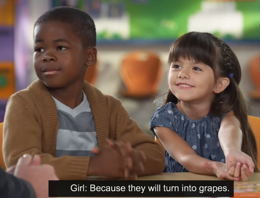How Does Your Target Audience Talk?

In ancient Greek times Aristotle wrote about rhetoric, or the art of persuasion. Much of his writing still holds true today. Any great orator knows one of the key parts of persuasion is knowing your audience. While that might not seem like a new, novel idea, there is a lot behind it, like understanding how your audience talks. Hopefully you read my earlier blog, Social Media Marketing is a Two-Way Street, and learned that it’s important to not only send one-way messages to your audience, but also to facilitate conversation in order to gain trust and eventually hold the power of persuasion.
Identify Your Target Market
If your product appeals to more than one demographic, it’s more than likely that you won’t be successful sending the same message to 16-24 year olds that you send to the 55 and older crew. They just don’t speak the same language.
Social Media
One of the reasons I believe there are so many younger professionals in social media management positions is because they grew up learning how to talk on those platforms to different types of people. While your 18-24 demographic might be mingling on Twitter or Pinterest, your 55 and older crew is probably on LinkedIn or Facebook. The type of communication that happens varies across these different channels.
It might seem logical, but many marketers still don’t know how their audience is communicating. Using the same communication skills you would use with children does not work when used with teenagers—they inherently communicate very differently.
Do Your Research
After the target market is identified, it’s important to conduct research to delve deeper into their preferences and behavior patterns. This does not have to be an expensive, daunting task: when I start any new freelance job I spend a lot of time observing and learning how people in that industry talk. For example, if writing content for a medical spa, one could read blogs on other websites, personal health blogs, look at similar Facebook pages, etc. to find out what that audience is saying and how they’re saying it. This style of writing is very different from writing for other disciplines, such as engineering.
 A great example of how a specific age group communicates is the recent TV ad campaign by AT&T (watch the video below). AT&T uses a moderator and children to persuade their audience to switch to AT&T with the slogan, “It’s not complicated, now is better.” These commercials, aimed at parents/older adults, demonstrate how many children talk and think, making it relatable to parents. AT&T uses the knowledge of how a certain age group (5-7) communicates to pull in their target audience—tricky!
A great example of how a specific age group communicates is the recent TV ad campaign by AT&T (watch the video below). AT&T uses a moderator and children to persuade their audience to switch to AT&T with the slogan, “It’s not complicated, now is better.” These commercials, aimed at parents/older adults, demonstrate how many children talk and think, making it relatable to parents. AT&T uses the knowledge of how a certain age group (5-7) communicates to pull in their target audience—tricky!
http://www.youtube.com/watch?v=Ijeg-jeTUBs
The next time you’re lacking creative ideas or have writer’s block, spend some time really learning about your target audience and observing them communicate. It will be insightful and useful, and you’ll learn something different every time.
Elizabeth Muckensturm – Guest Blogger & Internet Marketing Strategist



